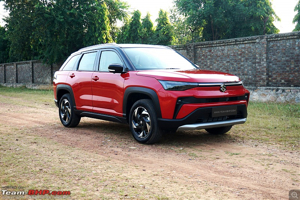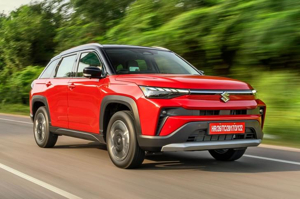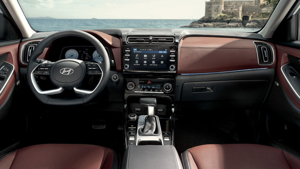
The compact SUV segment in India has a new player — the Maruti suzuki Victoris, positioned against the established Hyundai Creta. While the Creta is one of the best-selling SUVs in the country, the Victoris enters with competitive pricing, multiple hybrid options, and even an AWD variant. In this article, we compare the two SUVs specifically on their price range and engine choices, two of the most important factors for Indian buyers.
Maruti’s new Victoris arrives at a decisive moment for the compact-SUV buyer: it undercuts established rivals on price while bringing hybrid and CNG options (and even AWD on top trims). The Hyundai Creta, meanwhile, remains a proven all-rounder with broader engine choices and a mature features list. This article goes beyond headline prices to compare the Victoris vs Creta across the factors that matter most to buyers: true variant value, powertrains and running costs, cabin and practicality, technology and safety, ownership economics and a pragmatic buying recommendation.
Victoris vs Creta Quick snapshot — positioning and price windows
The Victoris is positioned between Maruti’s Brezza and Grand Vitara and targets value-conscious buyers who want low operating costs plus modern features. The Creta has been the segment benchmark for a few years and competes on balance: drivability, equipment and perceived premium-ness.
Ex-showroom price ranges (introductory / pan-India guidance)
Maruti Victoris: ₹10.49 lakh to ₹19.99 lakh.
Hyundai Creta: ₹11.11 lakh to ₹20.92 lakh.
Price alone gives the Victoris an immediate edge at the entry point and across many mid variants. But buying decisions hinge on more than the sticker — read on for a breakdown that helps pick the right variant for your priorities.

ariant and price reality — where you get the most value
Victoris’ line-up spans six trim names (LXi, VXi, ZXi, ZXi(O), ZXi+, ZXi+(O)) and importantly carries three distinct powertrain families (mild-hybrid petrol, strong hybrid e-CVT, and a petrol-CNG). Victoris pricing is deliberately aggressive: base trims start lower than Creta’s entry price and several well-equipped Victoris mid variants undercut Creta counterparts while offering comparable infotainment and safety gear.
Creta’s variant ladder is broader and includes a mix of NA petrol, turbo petrol and diesel variants with multiple gearbox choices (manual, CVT, 7-DCT and torque-converter AT). Creta therefore caters to buyers seeking specific drivetrains (diesel for long highway runs, turbo petrol for performance). Pricing for equivalent equipment levels typically sits a touch higher than Victoris.
Practical takeaway: if your priority is features per rupee and lower running costs, Victoris mid variants (ZXi / ZXi+) present very strong value. If you want a particular engine (turbo petrol or diesel) or the proven feel of Creta, expect to pay a premium.

Victoris vs Creta Powertrains and performance — efficiency vs outright power
The Victoris bet is on efficiency and a range that reduces ownership cost.
Maruti Victoris powertrains
• 1.5L mild-hybrid petrol — ~103 PS, 139 Nm; 5-speed MT and 6-speed AT.
• 1.5L strong hybrid — combined ~116 PS; e-CVT; best in class fuel economy (company claims ~28.65 km/l ARAI).
• 1.5L petrol + factory CNG — ~88 PS; 5-speed MT; CNG variant mileage claim ~27.02 km/kg.
AWD is available on top mild-hybrid AT trims.
Hyundai Creta powertrains
• 1.5L NA petrol — balanced everyday engine with MT/CVT.
• 1.5L turbo petrol — 160 PS/253 Nm (6- or 7-speed DCT on higher trims) — performance focus.
• 1.5L diesel — high torque for long-haul commuting (6MT/6AT).
Creta does not offer factory CNG or strong hybrid in most markets, but its turbo and diesel powertrains cover both performance and long-distance efficiency needs.
What this means in real life
If city commuting with the lowest running cost is the priority, Victoris’ strong hybrid and CNG are compelling. If you need outright acceleration or frequent long highway runs with high speeds, Creta’s turbo petrol and diesel remain the better mechanical fit.
Victoris vs Creta Fuel economy and total cost of ownership (TCO)
Car buyers rarely look just at ex-showroom price; fuel consumption, service costs and resale determine long-term value.
Victoris — hybrid/CNG advantage
Victoris strong-hybrid variants advertise class-leading ARAI numbers (~28.6 km/l). CNG and mild-hybrid variants also provide significant savings in urban use, and predictable low running costs are a major plus for daily commuters.
Creta — mixed economy, more power
Creta’s diesel variants are efficient on long trips; turbo petrols are thirstier but add performance. Service and parts costs for Hyundai are competitive, but historically Maruti models show marginally lower service bills and stronger resale — an important TCO factor especially in the first three years.
Gaadidrive tips use our live on-road price and EMI calculator to model real ownership cost (fuel, insurance, maintenance) for the exact variant you plan to buy.

Victoris vs Creta Cabin, space and practicality
Dimensions (manufacturer figures)
Victoris: length 4,360 mm; width 1,795 mm; height 1,655 mm; wheelbase 2,600 mm.
Creta: length 4,330 mm; width 1,790 mm; height 1,635 mm; wheelbase 2,610 mm.
The Victoris is marginally longer and taller, Creta has a slightly longer wheelbase. In practice both offer roomy cabins for four adults; the difference is not dramatic. Victoris’ packaging benefits from clever touches (front ventilated seats on higher trims, large boot even with CNG thanks to underbody packaging) while Creta continues to offer practical niceties such as rear sunshade options and two-step rear seat recline on higher trims.
If boot volume and usable interior space matter most, both are competitive — consider the exact variant (CNG tanks, AWD hardware) as these alter usable luggage space.

Victoris Vs Creta Features and tech — who leads on equipment?
Both cars are generously equipped in higher trims. Representative highlights:
Victoris strengths
Victoris brings the latest Arena-level tech to buyers: 10.1-inch touchscreen on top trims, 10.25-inch digital driver display, 64-colour ambient lighting, heads-up display, ventilated seats and an 8-speaker Infinity Dolby Atmos sound system on premium variants. Level-2 ADAS appears on ZXi+ variants — a notable first for an Arena model.
Creta strengths
Creta’s strengths are a mature infotainment and connected-car ecosystem, dual-zone climate on higher trims, a very refined DCT for turbo petrol and a strong level of perceived finish on the cabin. Hyundai’s equipment map is broad and well-executed across variants.
For buyers who want the latest gadgetry and an interior that feels contemporary, Victoris strong offers undercut the Creta on price for similar content. For proven refinement, Creta remains a dependable choice.
Victoris vs Creta Safety — real world protection
Maruti has pushed Victoris hard on safety: six airbags as standard, 5-star Bharat NCAP and Global NCAP results, and Level-2 ADAS on higher trims. Creta also provides a robust passive and active safety kit across higher variants (multiple airbags, ESC, TPMS and camera/sensor suites). Both cars aim to be safe choices; Victoris’ 5-star ratings are an important reassurance for safety-minded buyers.
Victoris Vs Creta Driving dynamics and ownership feel
Creta has long been praised for a confident chassis and broadly balanced ride-handling compromise. Victoris, using Maruti/Suzuki underpinnings and hybrid calibration from the Grand Vitara, promises efficient, composed urban behavior and is expected to be very easy to live with. Top-end Victoris AWD variants add light off-road capability. Test drives are the fastest way to decide: Creta for a more engaging drive at higher speeds; Victoris for ultra-efficient city commuting and low running cost.

After-sales, warranty, service network and resale
Maruti’s dealer network remains the largest in India and typically produces lower service and spares costs; resale values for Maruti models historically hold well. Hyundai’s service network is extensive and service quality is high; Creta’s resale is also strong but in many regions Maruti retains the edge. Warranty packages vary by dealers to dealer.
Who should choose which — buying personas
Choose the Victoris if you:
• Want the lowest running cost (strong hybrid or CNG) and maximum feature value per rupee.
• Prefer aggressive pricing and a modern tech stack in a value-centric package.
• Are a city commuter or want best-in-class fuel economy.
Choose the Creta if you:
• Prioritize engine choice (turbo petrol for performance, diesel for highway cruising).
• Want a refined driving feel and a long-proven ownership experience.
• Prefer Hyundai’s feature mapping and dealer experience in your region.
Victoris vs Creta Final verdict
If your primary objective is a low-cost to run, high-efficiency SUV with modern features and the best price-to-kit ratio, the Maruti Victoris is a strong disruptor in the compact SUV market. If you want broader engine choice, diesel or high-power turbo petrol capability, and a tried-and-tested driving package, the Hyundai Creta remains a safe, well-rounded choice.
Both cars are competitive and well-positioned; the right pick depends on your driving pattern, whether you value fuel economy over outright performance, and which features you value most. For a fast, personalized recommendation and the best on-road price, compare live offers and book a test drive for Victoris and Creta
Practical next steps on gaadidrive
Compare exact on-road prices and variant availability for both models Victoris and Creta :
where you can explore.
• See live on-road pricing including local taxes.
• Check finance and EMI options.
• Book test drives and request free doorstep exchange valuations if you plan to trade in an existing car.